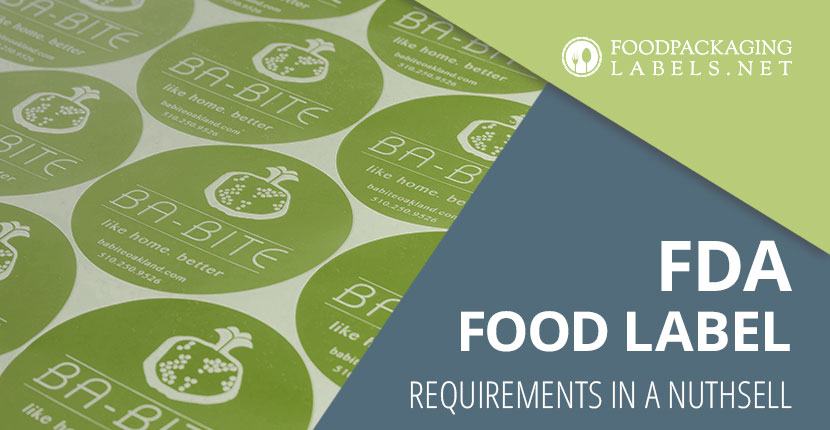When it comes to producing or importing food in the US, the food manufacturers’ work doesn’t end with their finalized food product ready for distribution. The food product first needs to be labeled. U.S. Food and Drug Administration is a federal agency that governs the labeling of food, and their complex labeling regulations often give headaches to food producers.
First, the fda.gov website is so vast, it takes a lot of time to even find information about a particular product.
Second, not all categories of food products are included on the site, so food manufacturers who produce food that’s not listed need to contact the website and wait to receive further instructions from the FDA or have their pending product included in a new category.
Third, there are so many exceptions to the rules, that sometimes it’s difficult to decipher what is mandatory labeling and what is optional.
Basic Elements on a Food Packaging Label
On closer inspection, you’ll see there are usually five elements a food packaging label needs to contain, unless a food producer is exempted from labeling their product. These elements are:
- statement of identity,
- the product’s net weight,
- manufacturer’s address,
- nutrition facts, and
- ingredients list
However, exceptions apply here as well. For example, if you are producing a single-ingredient food product, such as honey, you don’t need to include an ingredients list. There are exceptions to this as well. If you produce honey, but add sweeteners or some other ingredients, then you do need to include that information on your honey label. This is only a small example of how complex labeling regulations can be and how carefully you need to inform yourself in order to accurately present your product to the consumers.
Nutrition Facts Labeling Rules
The nutrition facts segment is probably the most complicated part about a food label. In consists of three parts:
- serving size,
- nutrients, and
- vitamins and minerals
There are strict guidelines and less strict recommendations as to the font colors, type, size, background colors, hairlines and placement of this part of the label. For example, the FDA strictly requires that the text and background colors make good contrast, so that the information is perfectly readable. However, their advice to use black colors on white background is only a recommendation, and not a strict requirement.
Serving size requirements
The real challenge in labeling nutrition facts is understanding the serving size requirement. Food producers need to determine the correct serving size recommendation for their food product using a list of products on the FDA website and their RACC (Reference Amount Customarily Consumed) values. You also need to figure out whether your product is a single serving or multi-serving food packaging, because the serving sizes for these two types of packaging should be displayed differently. Single serving food should use a description of the container, such as “1 cup” or “1 container”, and multi-serving food should use household and metric measurements. Nutrition facts label should also include five core nutrients (calories, total fat, sodium, total carbs and protein).
Ingredients list, Allergens and Health Claims
The rules for listing ingredients are a bit simpler. Food manufacturers are always required to list ingredients in the order of predominance by weight, from the heaviest to the lightest ingredient, though this rule can also become confusing when you need to label food such as cake made from a cake mix.
Allergens, if present in food, should always be listed with the ingredients. If you are making any health claims such as “fat-free”, make sure your claim is 100% accurate.
If you are a food producer unable to make heads or tails of food labeling requirements, you’ve come to the right place. The following ebook is a simplified version of the FDA’s rules for proper food labeling and it breaks down the difficult process into easy-to-understand steps. It also includes links to all the right pages to the fda.gov site, which will save you time looking for appropriate pieces of information.
Download the ebook and easily resolve all dilemmas about how to properly label your food product.

